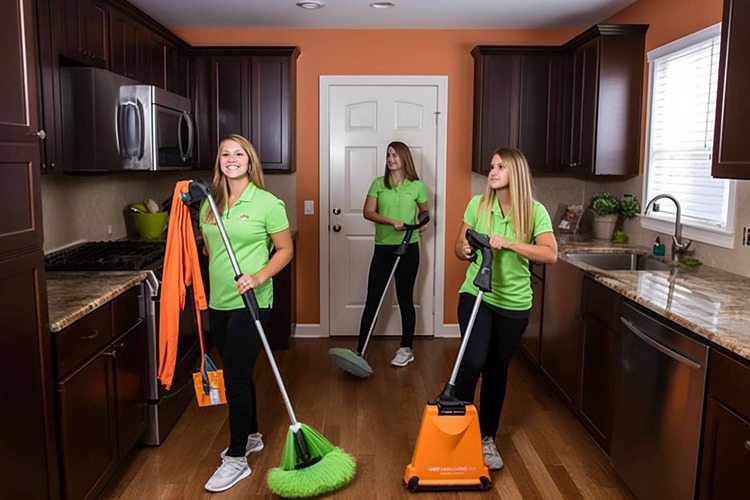Elevate Your Space: Choosing the Perfect Cleaning Service
Transform your living or working environment from passable to pristine with the right cleaning service. This comprehensive guide explores the spectrum of cleaning options, from routine touch-ups to specialized deep cleans. Learn how to select a trustworthy team, understand service scopes, and ask the right questions to ensure your space shines. Discover insider tips on scheduling, eco-friendly options, and maximizing the value of professional cleaning services.

Navigating the World of Professional Cleaning Services
Understanding Service Tiers
Professional cleaning services typically offer three main categories to cater to diverse needs:
-
Standard Cleaning: This entry-level service focuses on high-traffic areas, encompassing dusting, vacuuming, mopping, and basic bathroom and kitchen maintenance.
-
Deep Cleaning: A more thorough option that includes often-overlooked areas like baseboards, cabinet interiors, and hard-to-reach dust accumulation points. It may also cover appliance cleaning and intensive bathroom descaling.
-
Specialized Cleaning: Tailored for specific scenarios such as move-in/move-out preparation, post-construction cleanup, vacation rental turnovers, or commercial space maintenance.
Understanding these distinctions is crucial for setting appropriate expectations and ensuring you receive the level of service you need.
Determining Optimal Cleaning Frequency
The ideal cleaning schedule varies based on several factors:
- Household composition (e.g., families with children or pets may require more frequent cleaning)
- Home size and layout
- Personal cleanliness standards
- Lifestyle and daily activities
For busy households, weekly or bi-weekly services often provide the best balance. Smaller homes or those with fewer occupants might find monthly visits sufficient, complemented by light daily upkeep. Deep cleaning is typically recommended on a quarterly or bi-annual basis, or before significant life events like moving or welcoming a new family member.
Consistency is key—regular maintenance prevents buildup and can actually reduce the time and cost of each cleaning session over time.
Eco-Friendly Options and Home Safety
The rise of green cleaning products has introduced gentler, more environmentally conscious options for households. When exploring eco-friendly services, consider:
- Product certifications and ingredients
- Availability of fragrance-free options
- Use of EPA-approved disinfectants suitable for residential use
Additionally, inquire about the cleaning tools used, such as microfiber cloths and HEPA-filter vacuums, which can enhance cleaning effectiveness while reducing environmental impact.
Safety considerations extend beyond product choice. Ensure proper ventilation during and after cleaning, and discuss any specific concerns about delicate surfaces or materials in your home.
Essential Questions for Service Providers
Before booking a cleaning service, gather the following information:
- Supply logistics: Do they bring their own cleaning products and equipment?
- Service scope: What’s included in standard vs. deep cleaning packages?
- Staff vetting and training processes
- Insurance and bonding details
- Estimated service duration and team size
- Protocols for handling special surfaces or delicate items
- Policies on rescheduling and satisfaction guarantees
Clear, detailed responses to these queries can help you assess a provider’s professionalism and suitability for your needs.
Preparing for Cleaning Day
Maximize the effectiveness of your cleaning service with these pre-appointment tips:
- Clear clutter from floors and surfaces
- Secure valuables and important documents
- Identify areas needing special attention
- Plan for pet care during the cleaning session
Post-cleaning, conduct a brief walkthrough to ensure all priority areas have been addressed. Maintain results between visits with simple habits like prompt spill clean-up and regular bathroom ventilation.
Recognizing Quality Service
Look for these indicators of a reputable cleaning service:
- Transparent service scopes and checklists
- Punctual, uniformed, and identifiable staff
- Positive reviews highlighting attention to detail and respect for personal property
- Customizable service options
- Proactive communication and feedback mechanisms
Time and Scope Considerations
Cleaning duration varies based on factors such as:
- Home size and layout
- Current cleanliness level
- Specific service requests (e.g., appliance interiors, high dusting)
Provide accurate details about your space and needs during booking to ensure appropriate staffing and time allocation.
Making an Informed Decision
Selecting the right cleaning service involves aligning your priorities with a provider’s capabilities. Consider:
- Your most important cleaning outcomes (e.g., spotless bathrooms, allergen reduction)
- Preferred cleaning products and methods
- Budget and frequency requirements
With clear communication, realistic expectations, and a bit of preparation, professional cleaning services can significantly enhance your living or working environment, saving you time and ensuring a consistently clean space.






